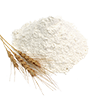Sign In Chef

By using our free meal planner (and the rest of spoonacular.com) you have to agree that you and only you are responsible for anything that happens to you because of something you have read on this site or have bought/cooked/eaten because of this site. After all, the only person who controls what you put in your mouth is you, right?
Spoonacular is a recipe search engine that sources recipes from across the web. We do our best to find recipes suitable for many diets — whether vegetarian, vegan, gluten free, dairy free, etc. — but we cannot guarantee that a recipe's ingredients are safe for your diet. Always read ingredient lists from the original source (follow the link from the "Instructions" field) in case an ingredient has been incorrectly extracted from the original source or has been labeled incorrectly in any way. Moreover, it is important that you always read the labels on every product you buy to see if the product could cause an allergic reaction or if it conflicts with your personal or religious beliefs. If you are still not sure after reading the label, contact the manufacturer.
We also attempt to estimate the cost and calculate the nutritional information for the recipes found on our site. Again, we cannot guarantee the accuracy of this information. Additionally, our nutrition visualizer that suggests that you limit sodium, sugar, etc., and get enough protein, vitamins, and minerals is not intended as medical advice. Similarly, our health tips are based on articles we have read from various sources across the web, and are not based on any medical training. The team behind spoonacular does not possess any medical qualifications and the information may be found to be incorrect or out of date based on future research. If you need help planning your diet or determining which foods (and recipes) are safe for you, contact a registered dietitian, allergist, or another medical professional.
Spoonacular is not responsible for any adverse effects or damages that occur because of your use of the website or any information it provides (e.g. after cooking/consuming a recipe on spoonacular.com or on any of the sites we link to, after reading information from articles or shared via social media, etc.)
× Image © recipeoftoday.com
Image © recipeoftoday.com
$0.16 per serving

1,334 likes

Ready in 30 minutes

Spoonacular Score: 15%
Easy Homemade Apple Fritters might be just the breakfast you are searching for. One portion of this dish contains approximately 2g of protein, 1g of fat, and a total of 148 calories. This recipe serves 12 and costs 16 cents per serving. If you have egg, apple, sugar, and a few other ingredients on hand, you can make it. 1334 people were impressed by this recipe. It is brought to you by recipe-of-today.blogspot.com. From preparation to the plate, this recipe takes around 30 minutes. It is a good option if you're following a lacto ovo vegetarian diet. Taking all factors into account, this recipe earns a spoonacular score of 26%, which is rather bad. Try Easy Gluten Free Apple Fritters, Easy Homemade Apple Sauce, and Easy Homemade Apple & Oat Muesli for similar recipes.




























Read the detailed instructions on recipeoftoday.com